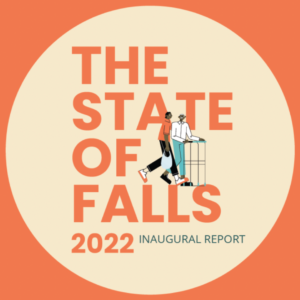The best monitoring may begin with ‘hello’
While long-term care providers appropriately advance the next generation of “Nana” technologies for monitoring the health and well-being of older adults, several less complicated and affordable technologies for this purpose are available today. Best of all, many of these focus on what is likely the most effective and humanistic approach to monitoring by providing access to direct communication between older adults, their families, and caregiver staff.
Communication between these groups has become more difficult because of a generational and comfort level divide in using technologies such as cell phones, e-mail, and videoconferencing. Yet at the same time, the need for these technologies increases each year. According to the National Institute on Aging, rates of depression (often caused by or exacerbated by isolation) are two to three times higher among the over-65 population than the general population. Data in 2004 from the Centers for Disease Control and Prevention showed suicide rates among those over 85 continuing to be more than double that of teenagers.
In addition to barriers to communicating through technology, family members are simultaneously finding it more difficult to visit in person. In a recent study, 15–20% of the nation's estimated 34 million family caregivers were found to live an average of 480 miles from their older parent or loved one. Beyond depression and social isolation, such distances can also create safety and other healthcare issues.
To address this, many companies are looking for ways to bridge the communication gap between “geeks and grans.” Below are just a few of the products for this purpose, available to both residents and long-term care communities.
Jitterbug™ Cell Phone by GreatCall
Designed with large buttons, a bright screen, and a cushioned ear rest, the Jitterbug doesn't include ringtones, a camera, or any other features that are sometimes confusing for older adults. It just makes and receives calls, and users can carry the phone to avoid having to ambulate to a landline or for use in an emergency. The design addresses the fact that cell phones keep getting smaller even as older adults' vision and manual dexterity decrease. In fact, one version of the phone only has three buttons, with operator-assisted dialing available by voice command.
PrestoSM
Boomers and their children are accustomed to using e-mail, leaving many older adults out of the Internet communication world. The Presto Service converts e-mails and digital photos from family and friends into custom-designed color printouts sent over a standard phone line to a Hewlett-Packard “Printing Mailbox” in the older adult's residence. In doing so, the service establishes a dedicated e-mail address for the resident while letting him or her pick up messages each day like they would the mail.
Celery®
Depending on the older adult's comfort level with technology, Celery takes the Presto concept one step further by allowing the resident to handwrite and send a fax message or photo back. The system converts the message into an e-mail and sends it to family or friends. The user can select black-and-white or color printouts.
Beamer™ Videophone/Beamer TV™ Videophone
Beamer Videophones use a standard phone and phone line to transmit video images during a call, either to a countertop “slim” unit with a 3.5" LCD screen or to an existing television. While the frames per second speed is not as fast as a Webcam, these plug-and-play video technologies allow family members to see—and check on—each other even if the older adult does not have a computer or lives far away. Each caller needs a unit to allow two-way viewing.
GrandCare™
Essentially a combination of all of the above products, GrandCare Systems uses the Internet and the older adult's television to send e-mails, photos, and reminders; schedule appointments; and provide general information such as weather and news to a customized channel. A second component can add a monitoring program by placing motion, temperature, door, and other sensors in designated locations in the older adult's residence. The sensors can be programmed to measure specific events, such as the opening of a medicine cabinet for pills, and send e-mail alerts to family members in cases of unusual activity. The most comprehensive of the communication products identified here, the basic system requires equipment and an Internet provider account. The sensor-monitoring component may be unnecessary for those living in a long-term care community.
Each of the above technologies can be used to improve communication, emotional well-being, safety, and health monitoring for older adults—either at home or in a long-term care community. At their best, such technologies can improve the quality of older adult lives simply by making it possible to say “hello.”
For further information, phone (703) 993-9131 or visit https://www.assistedliving.gmu.edu. To send your comments to the author and editors, e-mail carle1107@nursinghomesmagazine.com.
I Advance Senior Care is the industry-leading source for practical, in-depth, business-building, and resident care information for owners, executives, administrators, and directors of nursing at assisted living communities, skilled nursing facilities, post-acute facilities, and continuing care retirement communities. The I Advance Senior Care editorial team and industry experts provide market analysis, strategic direction, policy commentary, clinical best-practices, business management, and technology breakthroughs.
I Advance Senior Care is part of the Institute for the Advancement of Senior Care and published by Plain-English Health Care.
Related Articles
Topics: Articles , Risk Management , Technology & IT











